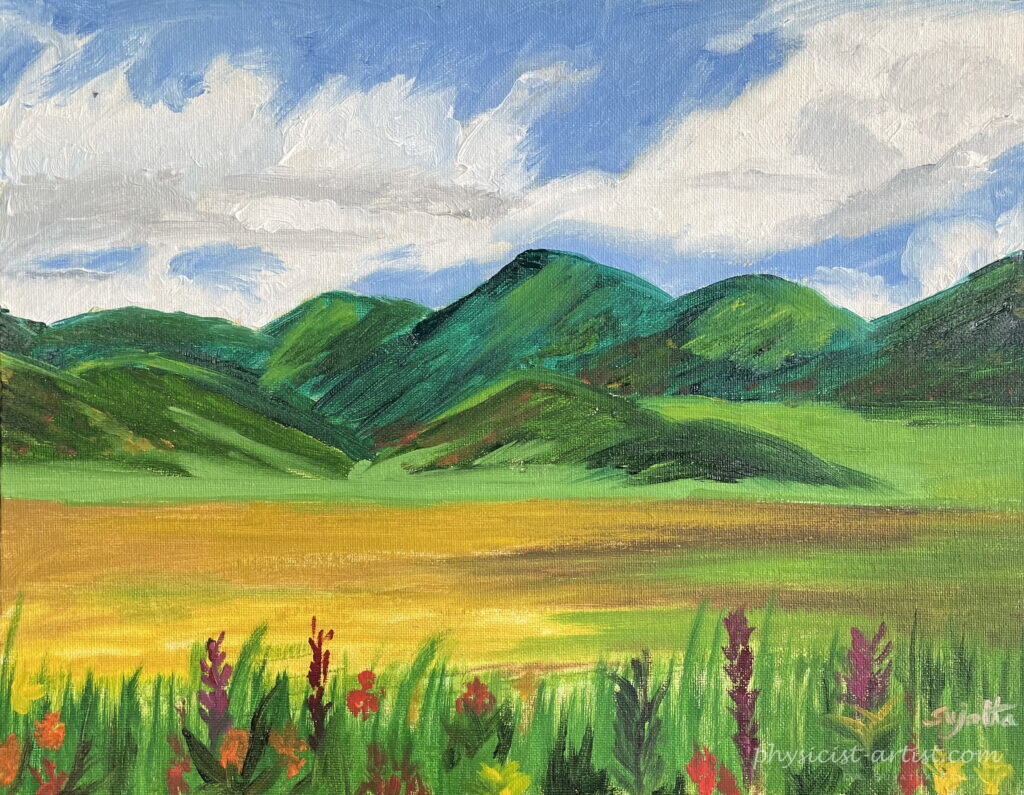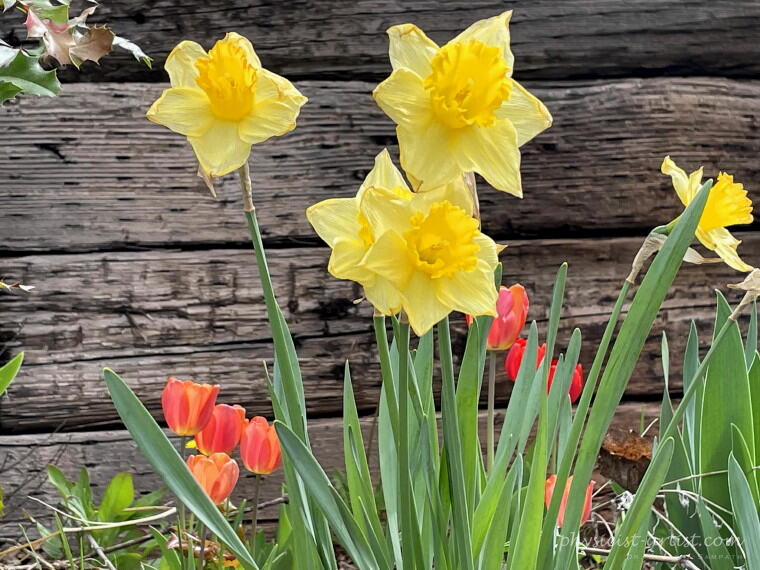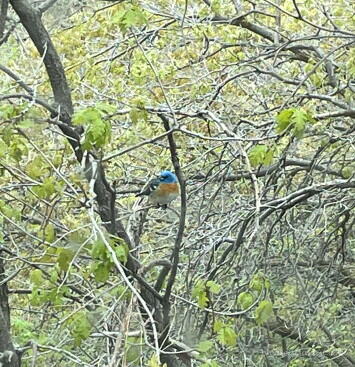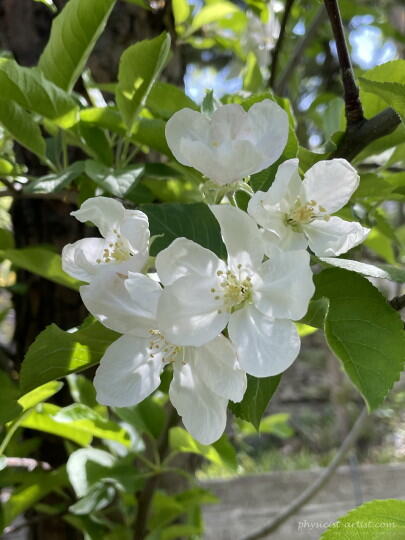
As we turn our clocks back today for Daylight saving time in most parts of the United States, I got to thinking about another kind of seasonal natural rhythm. That of plants keeping their ‘promise to bloom’ after long cold winter months, and the migratory birds keeping their ‘promise to return’ every spring in the northern hemisphere.
Spring has been seen as the season for rejuvenation, rejoice, particularly after long arduous winters. Mood of the arrival of the season and the change it brings about in warmth and beauty has captured imaginations of poets and artists. I look forward to two spectacles with the arrival of spring – the ‘promise to bud and bloom’ from tiny plants to might trees, and the ‘promise to return’ by the migratory birds from their winter nesting grounds.
July 2023 has been the hottest July recorded on earth, makes one ponder on the impact of climate change on these two promises in spring – to bloom and to return. What makes plants bloom after a long winter, and how do birds time their migration to their breeding grounds in spring?

‘Promise to bloom’ and Epigenetics:
Plants and trees monitor and sense many environmental factors in their life time, and during the cell-division, this memory of what they went through in that season, year is passed on from parent cell to offspring.
Timing of bloom in plants in spring is a combination of internal (endogenous factors like plant’s age, its developmental stage) and environmental factors like temperature, length of the day, amount of light it receives, impact of prolonged exposure to winter/cold. “Determining when to flower is critical for the plant to reproduce successfully”. Molecular mechanisms in the cells govern season specific circadian rhythms. Scientists have also discovered that plants have memory by which they ‘remember’ that they’ve gone through a prolonged winter. This information is etched in their cellular memory by a process called ‘vernalization’ – ‘an environmentally-induced epigenetic switch in which winter cold triggers epigenetic silencing of floral repressors and thus provides competence to flower in spring’. Vernalization is also important for our food crops, like wheat, barley etc., that enables them to flower at the right time for optimal seed production.
Scientists have discovered a molecule called ‘COLDAIR’ that enables the plant to set up this memory in winter. Sequence of molecular mechanisms start in Fall, with release of the FLC gene that suppresses flowering, COLDAIR is switched on after a prolonged exposure to cold, silences the FLC gene and other cellular processes are enabled to signal the plant its’ time to bloom in spring.
The fascinating take-away is that seasonal and climatic factors experienced by the parent cells influence the birth and growth of each new generation of plants and trees. Epigenetic memory is a very thriving field of research, and very interdisciplinary (biologists, physicists). Questions like – where and how do plants store the information on environmental factors, what are the mechanisms involved in this information processing, and transfer to the offspring are being studied by various research groups.Epigenetics is not only affecting the bloom of tulips, dandelions and spring blossoms, or the wildflowers in summer that carpet the meadows and mountain slopes, it plays a major role in our food crops and agriculture.
With the rapidly changing seasonal weather patterns from year to year, question that begs to be pondered on is – how would plants respond to these environmental changes and how this affects their ‘promise to bloom’, season after season, year after.

‘Promise to return’ – migratory birds:
Every Spring, many of us look forward to the return of the birds migrating back from their winter nesting grounds. In continental US, birds migrate from southern to northern US and as far as from South America. For many birders, this is a joy to look forward to. There’s an apple tree in our neighborhood, and over last few years, I’ve noticed that return of the hummingbirds to our neck of the woods coincides when the apple tree starts to bloom.

Its’ fascinating that some of these tiny birds fly thousands of miles, twice every year – in Spring and Fall, and mechanisms. Reasons for migration are still not fully understood.
Different bird species pick their timing to migrate depending on factors like the quality of the winter habitat, time to grow their molten feathers and put on weight, gain energy and muscle mass to prepare for their long flights.
Timing of migration is critical to the birds’ survival, their ability to reproduce and for the new chicks to be ready to take their first long flight back in Fall/Autumn to their winter nesting grounds.
How to the birds know when and where to migrate?
Birds use celestial bodies like the Sun, Moon and Stars to help with their navigation on where to go. Migratory birds also use an internal magnetic compass, they can detect subtle patterns in Earth’s magnetic fields which they use for navigation. According to studies “, birds have at least three different compasses at their disposal: one allows them to extract information from the position of the sun in the sky, another uses the patterns of the stars at night, and the third is based on Earth’s ever present magnetic field.”
The fact that birds are able to see, detect small variations in earth’s magnetic fields caused by short-lived fundamental quantum effects, through photo-receptors in their eyes, is intriguing and mind-boggling.
Studies have shown that timing of migration is changing and shifting with climate change. Birds are arriving earlier to their spring and summer breeding grounds, influenced by ‘warmer seasons’ and this trend, more pronounced in northern latitudes. Temperatures rising earlier in the seasons detrimentally affects the birds, as birds start to arrive at their breeding grounds earlier, plants which typically are synchronized to feed them are affected by intermittent freeze and thaw with this changing weather patterns.
Migratory birds are critical players in eco-systems, from pollination, pest control, and in many cases being part of the food chains. Understanding the effects of climate change on migratory patterns of birds are not only crucial for conservation of the birds species, it also plays a vital role planning for habitat and eco-systems preservation.
As we embark into the daylight savings hours today, signifying a seasonal crossover, I wonder about the seasonal and cyclical rhythms in Nature, “promise to return” and the “promise to bloom” and their patterns in the years to come !!
Love your blogs. Very well written and summarizes the nature’s way beautifully.
Thank you very much Ranga Sampath. Appreciate the feedback.
As a Physicist, I am interested in the workings of Nature at the atomic and molecular scales, and as an artist I am awed by the beauty that manifests as a result of these molecular phenomena, these blogs are my humble effort to combine my interests in both these domains.